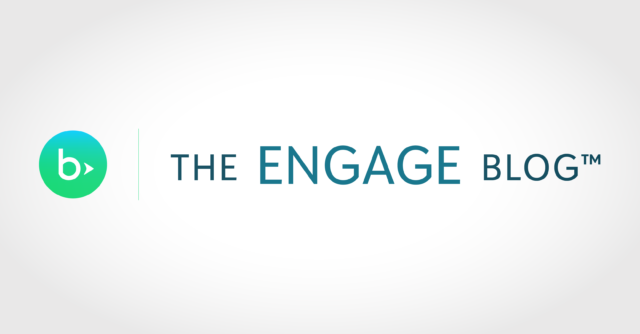Donor Retention: The Importance of Keeping Supporters Engaged

What Is Donor Retention?
Donor retention is a nonprofit’s ability to keep its existing donors engaged and encourage them to continue giving over time. It serves as a gauge of how well an organization maximizes its current donor relationships and emphasizes its dedication to stewardship.
This guide explores why donor retention should be a priority and shows you how to measure donor retention effectively so you can keep supporters engaged for years to come.
Why Does Donor Retention Matter?
Building strong relationships with donors is fundamental for nonprofit success. When donors feel valued and see the impact of their contributions, they are more likely to remain engaged and continue supporting the cause.
In a fundraising landscape where donor acquisition often takes center stage, donor retention offers powerful benefits that can transform an organization’s financial stability and impact.
Consider some of the following reasons why donor retention should be a top priority for your organization:
1. Cost-Effectiveness
Acquiring new donors can prove significantly more expensive than retaining existing ones. Research shows that nonprofits generally spend about $1.50 to acquire a new donor, while existing donors only cost about 20 cents to retain.
By focusing on retention, organizations can reduce costs and maximize fundraising efficiency.
2. Increased Lifetime Giving and Fundraising Success
Loyal donors tend to give more over time. Retained donors are more likely to increase their donation amounts, contribute to special campaigns, and consider legacy giving, leading to greater long-term impact.
Organizations with strong donor retention rates also typically see higher overall fundraising results. Retained donors are more likely to respond to annual giving campaigns, major fundraising events, and emergency appeals.
3. Higher Predictability and Stability
A high donor retention rate ensures a more predictable revenue stream, helping reduce financial uncertainty and allowing nonprofits to plan and execute projects and services with far more confidence.
4. Increased Advocacy and Word-of-Mouth Support
Engaged donors do more than just give: They also spread the word about your nonprofit’s services and impact. Satisfied donors are more likely to encourage friends, family, and colleagues to support your cause, helping your organization organically grow its reach and acquire new supporters.
The cost of losing donors extends beyond lost revenue. It can diminish a nonprofit’s reputation and impact staff morale. Fortunately, there are many cost-effective strategies to avoid donor lapse, which we cover below.
What Does the Current State of Donor Retention Look Like?
Data from the Fundraising Effectiveness Project’s Q3 2024 report reveals ongoing challenges in donor retention across the nonprofit sector. Donor retention is declining by 4.6% year-over-year, marking the fourth consecutive year of decreases. The number of donors also has fallen, by 5.3%, with the steepest declines among smaller donors giving under $100; these donors have experienced a decline of 12.4% year-over-year.
Declining numbers make measuring and strategizing around donor retention more critical than ever. When organizations fail to prioritize retention, they face an uphill battle of constantly acquiring new donors to replace those they’ve lost. This is a costly and unsustainable approach that diverts resources from mission-critical work.
Why Donors Stop Giving
It is inevitable that some supporters may stop donating at any given time, but understanding why they lapse is crucial to mitigating very avoidable causes of their fall-off in giving. Reasons often include:
- Lack of gratitude: If donors don’t feel appreciated, they likely will not return. A simple thank-you can go a long way.
- Poor communication: Too many or too few updates can make donors feel disconnected. Keep them informed, not overwhelmed.
- Unclear impact: Donors want to know where their money is going and if it is making a difference. Share impact stories and real results.
- Financial constraints: Life and economic changes can affect giving. Consider offering flexible options like smaller, recurring donations.
- Negative experiences: Poor customer service, unanswered questions, or ethical concerns can push donors away. Strive to maintain transparency, trust, good communication, and a positive donor experience.
- Complicated giving process: If donating is difficult or inconvenient, people may not bother. Keep your donation process, especially your forms for online giving, simple and user-friendly.
- Competing causes: With so many nonprofits asking for support, donors may shift their focus elsewhere or experience fatigue altogether.
Early Warning Signs of Donor Lapse
Keeping donors engaged is essential for long-term retention, but early signs of disengagement can indicate potential donor lapse. Below are some common red flags to watch out for:
Decreased Donation Frequency and Amount
A donor who once gave regularly but starts skipping donations or giving less often may be losing interest or facing financial constraints. If active donors decrease or pause their gifts, it’s a sign they may not feel connected to the organization anymore.
Reduced Engagement with Outreach
When thank-you emails and personal calls go unanswered, it could signal that a donor is disengaging. A lack of response to newsletters, social media posts, or surveys is another warning sign. Be aware of donors who unsubscribe from your email lists. While some may simply be busy, growing or consistent unresponsiveness suggests waning interest.
No Participation Beyond Giving
Many engaged donors don’t just give money—they also volunteer, advocate, or refer others. Take note of donors who once attended events, joined discussions, or took part in campaigns tapering off.
Feedback or Complaints
When donors voice concerns about the organization, whether related to communication, transparency, or service, it’s a critical warning sign. Ignoring these complaints can lead to donor attrition. Acknowledging their concerns, addressing any issues, and making improvements based on feedback can help rebuild trust and loyalty.
How Do You Measure Donor Retention?
Understanding your donor data is essential for improving retention. Below are three must-have metrics for evaluating success.
Donor Retention Rate Formula
Donor retention rate is the percentage of donors who continue to give to a nonprofit organization over a specific period, typically from one year to the next. This is easily calculated by dividing the total number of repeat donors this year by the total number of donors from the previous year, multiplied by 100.
For example, if you had 1,000 donors last year and 400 of them donated again this year, your donor retention rate would be: (400/1000)×100=40%.
The higher the percentage value, the better. A high donor retention rate indicates stronger donor relationships, financial stability, and potentially lower fundraising costs.
Donor Lifetime Value (LTV)
Donor lifetime value estimates the total amount a donor will contribute over their entire relationship with your organization. It’s calculated by multiplying average donation amount × donation frequency × donor lifespan in years.
For example, if a donor gives $200 annually for 5 years, their LTV would be: 200×1×5=$1,000.
LTV is directly linked to retention. Studies show a 10% improvement in retention can equal a 200% increase in lifetime donor value, making retention efforts a smart investment.
Donor Attrition Rate
Donor attrition rate refers to the percentage of donors who stop giving to a nonprofit over a specific period. It’s the opposite of donor retention rate, and measuring it helps your organization understand how many supporters you are losing.
Attrition rates are calculated by dividing the number of lost donors by the total number of donors at the start of the period, multiplied by 100. For example, if you started with 1,000 donors at the beginning of the year and lost 100, your attrition rate would be: (100/1,000)×100=10%.
High attrition rates can indicate issues with donor engagement, communication, or overall satisfaction.
Software that Helps with Donor Retention
While building a loyal donor base can feel overwhelming, there are tools to support these initiatives:
- Donor Management Software: Centralizes donor information including donation history, communication preferences, and engagement levels, allowing organizations to personalize outreach and track retention. These platforms often include automated email campaigns, event management, and integration with fundraising platforms.
- Analytics and Reporting Tools: Provide insights into donor behavior, engagement, and giving trends. These tools track key metrics like retention rates and campaign performance, helping nonprofits identify what’s working and where improvements are needed.
These tools work best when integrated, enabling automated reporting that combines donor data with performance analytics to create a complete picture of retention success.


